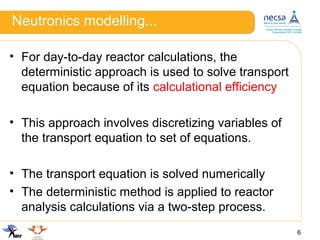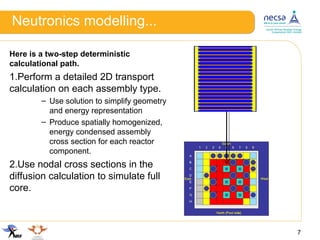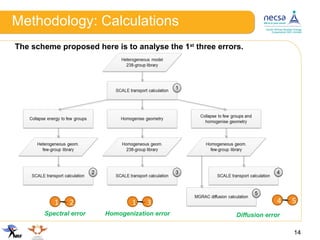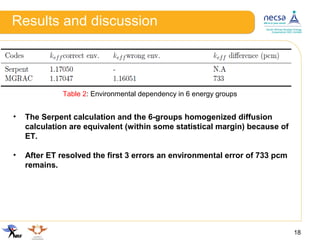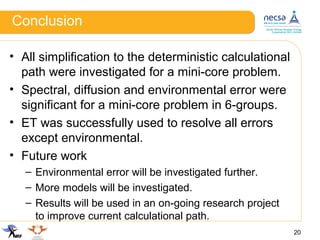This document discusses modelling errors introduced in the deterministic calculational path for analyzing a mini-core reactor problem. It presents the methodology used to quantify individual and combined effects of simplifications like energy group condensation, spatial homogenization, and the diffusion approximation. The results show that spectral, diffusion, and environmental errors are significant for a 6-group model of the mini-core problem, with combined errors over 4000 pcm. Equivalence theory resolved errors except for a remaining 733 pcm environmental error. Future work will further investigate environmental errors and apply these findings to improve reactor modelling calculations.
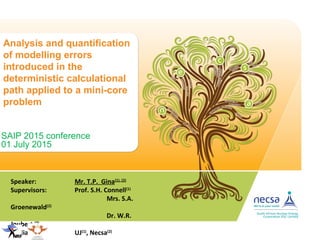


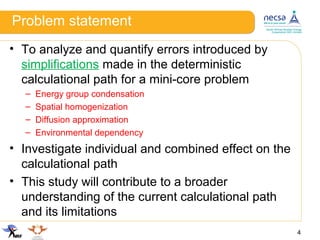
![Neutronics modelling
• Determines neutron flux distribution
• It describes the motion and interaction of
neutrons with nuclei in the reactor core.
– 7 independent variables [x, y, z, θ, ϕ, E, t]
– Flux is the dependent variable.
5
(Duderstadt and Hamilton 1976)](https://image.slidesharecdn.com/fff80328-284f-4261-a50c-3e706ca62b60-150714080004-lva1-app6892/85/SAIP2015-presentation_v5-5-320.jpg)
